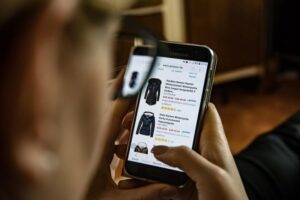Bottle seal leak testing is a preventive and mandatory technique to implement if you deal with product manufacturing. Robust packaging materials and professional seal leak testing help you dodge unnecessary costs and time wastage. There are many industry-standard techniques for testing bottle seals for leaks. However, only some methods and tools meet the minimal criteria of quality and effectiveness. It’s imperative to research different bottle seal testing technologies and tools and where and when they can be used.

Table of Contents
Types and Uses of Bottle Leak Testers
A bottle leak tester is a handheld or stationary tool packed with advanced technologies and features to facilitate the testing of bottles for underlying leaks. The device is highly beneficial for any business specializing in packaging and selling liquids.
It’s a tool most commonly used by those in the bottled water business, chemicals and drugs, and other industries dealing with the packaging and delivery of liquids. When used appropriately, bottle leak testers can protect your company’s reputation, guarantee customers’ safety, and reduce costs associated with leaks. Testing bottles for leaks before packing certain liquids for transportation protects your business against negligence claims.
Common Technologies Used for Testing Bottles
Bottle leak testers use two leading technologies: vacuum decay and pressure decay. Pressure decay technology is quite prevalent. It works by detecting excess pressure in the container after sealing and pressuring. The vacuum decay tester works by detecting a pressure drop inside the bottle when tested under a specific volume of vacuum.
We use a vacuum bottle leak detector at Seal-Check-Pro to detect micro leaks and holes in your packaging bottles. Our powerful leak detector can detect leaks in several gallon-sized bottles and tiny vials within minutes. Our container leak detector is accurate, efficient, and reliable.
Techniques on How to Test Bottle Seal Leaks
The bottle seal testing process largely depends on the kind of tester. However, the following tips will work for most bottle seal leak testers.
- Connect the bottle seal leak tester to power. You can do so by inserting the tool’s power socket into the 3-pin 15A socket. Once the machine powers on, insert its pressure pipe into the compressed air inlet of the bottle in question.
- Using the digital timer, set the time you want the testing process to last.
- Move the device’s pressure regulator valve to adjust the pressure flow.
- Once enough pressure is pumped, disconnect the pressure hose from the tank.
- Now link the pressure pipe to the pressure nipple in the bottle you want to test for leaks close to its fixture.
- Pour water slowly into the container you want to test for leaks. Ensure you fill the tank with enough water so that the test bottle can quickly submerge.
- After that, close the container’s lid.
- Press the start button to start testing the bottle for leaks.
- If there is leakage, you will notice bubbles forming in the water. If there are no leaks, the water will remain still and undisturbed.
These are standard tips when testing your bottles for leaks with a functional bottle leak tester. Always use a high-quality and reliable bottle seal leak tester from leading providers such as Seal-Check. Our testers are proven capable of testing different types and sizes of bottles for leaks. In fact, they can test several dozen bottles within 60 minutes, which is suitable for large industries and established businesses.
Wrap Up
Quality bottle seal leak detection ensures you do not package your products in leaky and damaged bottles. Partnering with leading companies such as Seal-Check-Pro to facilitate bottle seal leak testing can save your company a lot financially and time-wise. Get in contact with us today to learn more!




